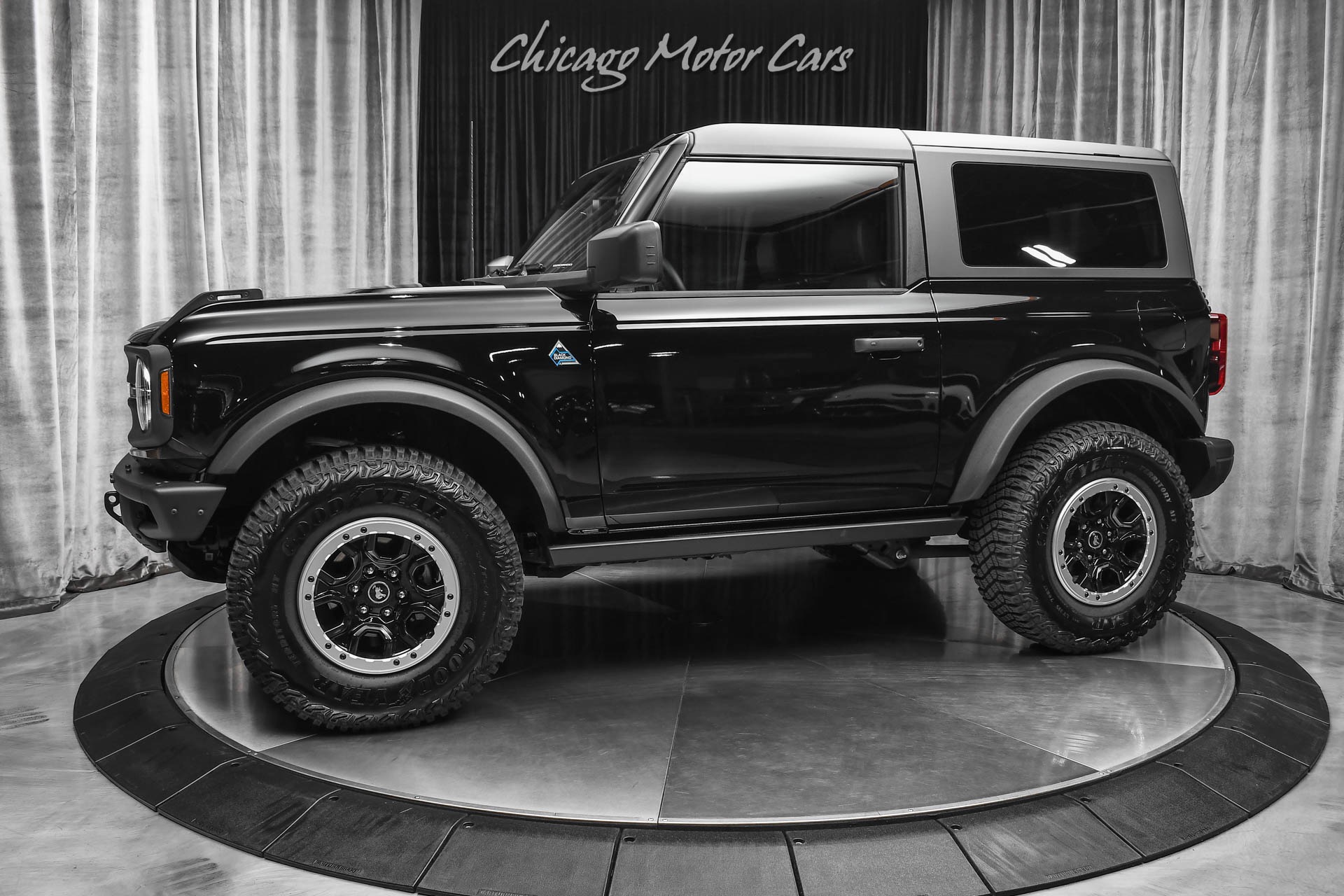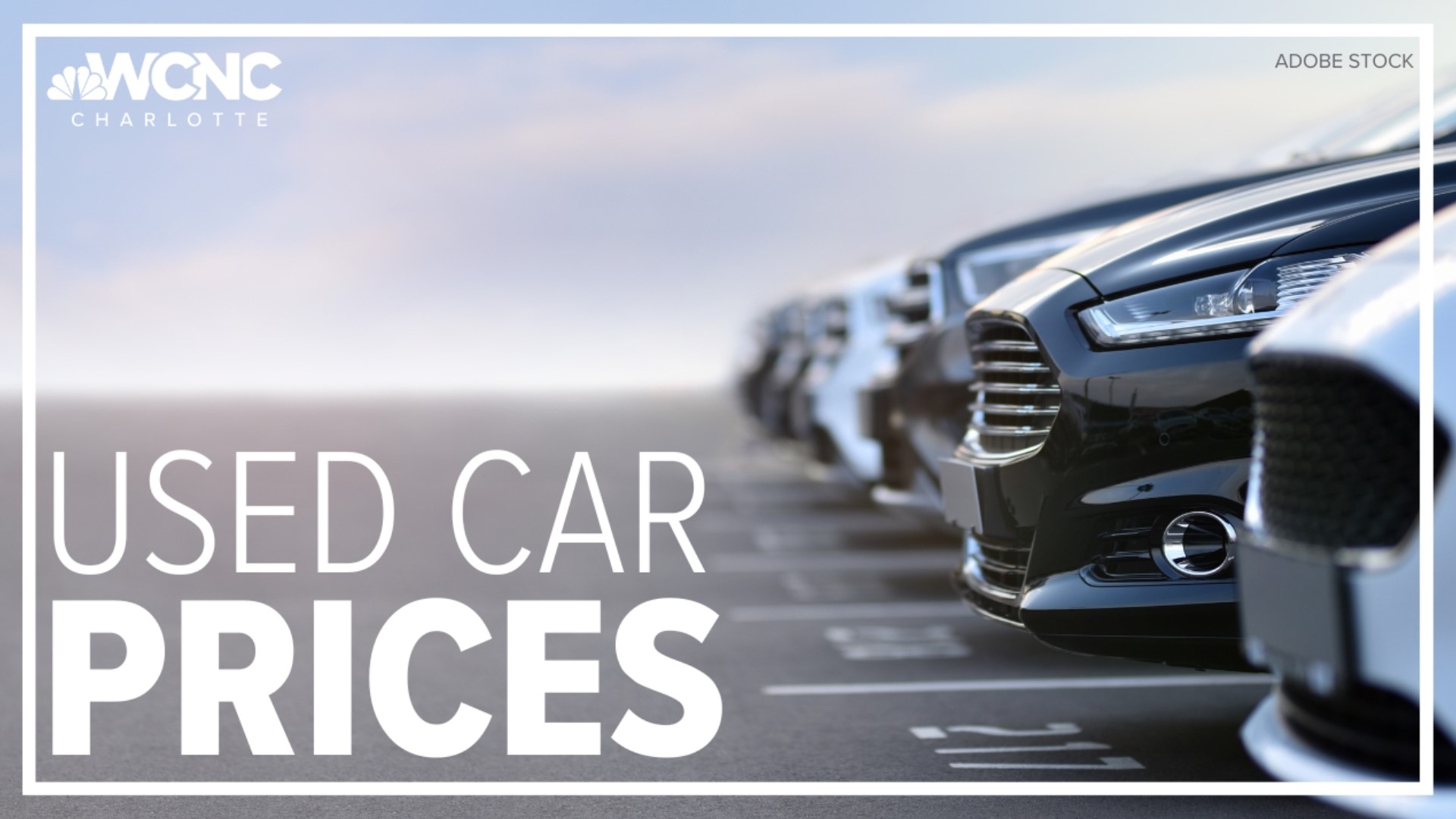Used Flatbed Trucks For Sale By Owner: Your Ultimate Guide to Smart Buying pickup.truckstrend.com
In the world of commercial and personal hauling, few vehicles offer the sheer versatility and utility of a flatbed truck. With its open cargo area, a flatbed can transport everything from construction materials and landscaping supplies to ATVs, machinery, and even other vehicles. While brand-new flatbeds come with hefty price tags, the used market, particularly "for sale by owner" listings, presents a compelling alternative for those seeking significant savings and direct insights into a vehicle’s history.
Buying a used flatbed truck directly from its owner can be a game-changer for small businesses, independent contractors, farmers, or individuals needing serious hauling capacity without the overhead of dealership markups. This comprehensive guide will navigate you through every aspect of acquiring a used flatbed truck by owner, offering practical advice, detailing essential considerations, and equipping you with the knowledge to make a confident and cost-effective purchase.
Used Flatbed Trucks For Sale By Owner: Your Ultimate Guide to Smart Buying
Why Consider Buying a Used Flatbed Truck By Owner?
The decision to bypass dealerships and engage directly with a private seller holds several distinct advantages:
- Significant Cost Savings: The most apparent benefit is the potential for a lower purchase price. Private sellers often have less overhead than dealerships, allowing for more flexible pricing. Furthermore, buying used means avoiding the steep depreciation hit that new vehicles experience in their first few years.
- Direct Negotiation: You’re dealing directly with the person who owns the vehicle, which can lead to more straightforward and open negotiations. There’s no sales manager to consult, no layers of bureaucracy.
- Transparent History (Potentially): A private owner can often provide a more detailed and candid history of the truck’s life, including its usage, common quirks, and an honest account of its maintenance. They might have meticulous records, personal anecdotes, and a genuine interest in finding a good home for their vehicle.
- Wider Selection and Unique Finds: The private market isn’t limited to what’s currently on a dealer’s lot. You might find custom-built flatbeds, specific configurations, or older, well-maintained models that are no longer available new, offering a unique opportunity to find a truck perfectly suited to your niche needs.

Understanding Flatbed Truck Types and Configurations
Before diving into the search, it’s crucial to understand the various types of flatbed trucks and their configurations to match the vehicle to your specific requirements:
- Light-Duty Flatbeds (e.g., Ford F-250/350, Ram 2500/3500, Chevy Silverado/GMC Sierra 2500/3500 with aftermarket flatbeds): These are typically ¾-ton or 1-ton pickup truck chassis converted with a flatbed. Ideal for personal use, light commercial hauling, landscaping, or transporting smaller equipment. They offer a good balance of capability and maneuverability.
- Medium-Duty Flatbeds (e.g., Ford F-450/550, Ram 4500/5500, Isuzu NPR, Hino 195): Stepping up in capability, these trucks are built on heavier chassis designed for more demanding commercial applications. They are common in construction, equipment rental, and delivery services, capable of hauling heavier loads and often featuring higher Gross Vehicle Weight Ratings (GVWRs).
- Heavy-Duty Flatbeds (e.g., Ford F-650/750, Peterbilt, Freightliner chassis with custom flatbeds): These are serious workhorses, often built on commercial truck chassis, designed for industrial applications, heavy machinery transport, or specialized hauling. They boast massive hauling capacities but come with higher operating costs and require commercial driver’s licenses (CDLs) in many cases.

Common Flatbed Configurations:
- Standard Flatbed: A simple, open platform.
- Gooseneck/Fifth-Wheel Ready: Equipped with a hitch in the center of the bed for towing large trailers.
- Stake Pockets: Holes along the bed’s edge to insert stakes for retaining cargo.
- Headache Rack: A protective frame behind the cab to prevent cargo from shifting forward.
- Toolboxes/Underbody Storage: Integrated storage compartments for equipment and tools.
- Lift Gates: While less common on pure flatbeds, some might feature a hydraulic lift gate at the rear for easier loading/unloading.
- Drivetrain: 2WD (for highway efficiency) vs. 4WD (for off-road, mud, or snow traction).
- Engine Type: Diesel (more torque, better fuel economy under load, higher longevity but more expensive maintenance) vs. Gas (lower upfront cost, simpler maintenance, less torque).

The Search Process: Finding Your Ideal Used Flatbed Truck By Owner
Finding the right truck requires a systematic approach. Here’s where to look and how to refine your search:
- Online Marketplaces: These are your primary hunting grounds.
- Craigslist & Facebook Marketplace: Excellent for local listings, often from private sellers. Be specific with your search terms (e.g., "flatbed F-350," "dually flatbed," "work truck").
- eBay Motors: Good for a wider geographical search, often featuring detailed listings.
- Dedicated Truck Forums & Classifieds: Websites like Autotrader, CommercialTruckTrader, or even specific make/model forums (e.g., Ford-Trucks.com, Cummins Forum) can have "for sale" sections.
- Local Advertising: Check local newspaper classifieds, community bulletin boards, or even drive through industrial parks or rural areas where businesses might post "for sale" signs on their vehicles.
- Word of Mouth: Let friends, family, and colleagues know you’re in the market. You might stumble upon a lead for a truck not publicly advertised.
When searching, use keywords that reflect what you need: "flatbed," "utility truck," "service truck," "gooseneck," "dually," followed by make/model preferences (e.g., "Ford F350 flatbed"). Filter by price range, year, mileage, and location to narrow down options.
Key Considerations Before Making a Purchase
This is where due diligence becomes paramount when buying from a private owner.
- Define Your Budget: Beyond the purchase price, factor in potential costs for insurance, registration, initial maintenance (fluids, filters), and any immediate repairs.
- Intended Use: Be brutally honest about what you’ll be hauling. This dictates the required GVWR, engine type (gas vs. diesel), drivetrain (2WD vs. 4WD), and specific flatbed features. Overbuying or underbuying can lead to regrets.
- Thorough Condition Assessment (Critical!): Since there’s no dealer warranty, your inspection is key.
- Exterior: Look for rust on the frame, cab, and especially the flatbed itself. Check tire wear (even, deep tread), all lights, and any signs of body damage or poor repairs.
- Engine & Drivetrain: Check for fluid leaks (oil, coolant, transmission fluid). Listen for unusual noises (knocks, squeals, grinding). Check the exhaust for excessive smoke. Verify the transmission shifts smoothly through all gears. If 4WD, test it.
- Brakes: Check pedal feel (spongy?), listen for grinding. Visually inspect rotors and pads if possible.
- Suspension: Look for sagging, broken leaf springs, worn shocks, or uneven ride height.
- The Flatbed Itself: Inspect the decking (wood or metal) for damage, rot, or excessive wear. Check the structural integrity of the flatbed’s frame, welds, and tie-down points. Ensure any integrated toolboxes or storage areas are functional and secure.
- Interior: Check for excessive wear, functional gauges, HVAC, and power accessories.
- Vehicle History Report (VIN Check): Invest in a Carfax or AutoCheck report using the Vehicle Identification Number (VIN). This can reveal accidents, salvage titles, flood damage, odometer rollbacks, and sometimes even service history. Always verify the VIN on the report matches the VIN on the truck (door jamb, dashboard, title).
- Maintenance Records: Ask the owner for any available maintenance receipts or logs. A well-documented history is a strong indicator of a well-cared-for truck.
- The Test Drive: Don’t skip this! Drive the truck on various road conditions – city, highway, and ideally, some uneven terrain if you plan to use it off-road. Pay attention to how it starts, accelerates, brakes, steers, and handles. Listen for any strange noises.
- Pre-Purchase Inspection (PPI): This is arguably the single most important step. Arrange for an independent, certified mechanic (preferably one specializing in trucks or commercial vehicles) to perform a comprehensive inspection. They can identify hidden issues that you might miss, saving you thousands in post-purchase repairs. This small investment is invaluable.
Negotiation and Closing the Deal
Once you’ve found a promising truck and completed your inspections, it’s time to negotiate.
- Research Market Value: Use resources like Kelley Blue Book (KBB), NADAguides, and comparable listings to determine a fair market value for the specific truck you’re considering.
- Be Prepared: Know the truck’s strengths and weaknesses. Use any issues uncovered during the inspection (e.g., worn tires, minor leaks) as leverage for negotiation.
- Be Polite but Firm: Express your interest, but don’t be afraid to walk away if the price isn’t right or if the seller is unwilling to budge on a deal that doesn’t feel fair.
- Payment Method: For private sales, a cashier’s check from a reputable bank is generally the safest option. Avoid carrying large amounts of cash or making wire transfers to unknown individuals. Meet at a bank if possible to complete the transaction securely.
- Paperwork: Ensure you receive the signed vehicle title (transfer of ownership). Most states require a bill of sale, which should include the sale price, date, VIN, names, and signatures of both buyer and seller, and clearly state "as-is" (if applicable). An odometer disclosure statement is also usually required. Understand your state’s specific requirements for title transfer and vehicle registration.
- Insurance: Arrange for insurance coverage before driving the truck off the seller’s property.
Potential Challenges and Solutions
While buying by owner offers benefits, it also comes with unique challenges:
- "As-Is" Sales: Most private sales are "as-is," meaning once you buy it, any problems become your responsibility.
- Solution: The Pre-Purchase Inspection (PPI) is your best defense against unexpected issues.
- Undisclosed Issues: An owner might inadvertently (or intentionally) omit information about past problems.
- Solution: A thorough PPI and a comprehensive VIN history report are crucial. Ask direct questions and pay attention to the owner’s responses.
- Scams: Be vigilant against common red flags:
- Prices that are too good to be true.
- Reluctance to meet in person or allow an inspection.
- Demands for wire transfers or gift cards.
- Seller claiming to be out of the country.
- Title issues (e.g., no title, a lien on the title, a salvage title not disclosed).
- Solution: Always meet in a public place, insist on seeing the truck and title in person, verify the VIN, and use secure payment methods. Trust your instincts.
- Lack of Maintenance Records: While not a deal-breaker, it makes assessing the truck’s history harder.
- Solution: Place even greater emphasis on the PPI by a trusted mechanic.
Estimated Price Table for Used Flatbed Trucks For Sale By Owner
Please note: These are general estimates and actual prices can vary significantly based on specific make, model, engine type, features, condition, mileage, regional market demand, and negotiation. This table provides a rough guide.
| Category | Age Range (Years) | Mileage Range (Miles) | Typical Condition | Estimated Price Range (USD) | Key Considerations |
|---|---|---|---|---|---|
| Light-Duty | 10+ | 150,000 – 300,000+ | Fair | $5,000 – $12,000 | Older, higher mileage, potential for significant wear |
| (F-250/350, Ram | 5-10 | 80,000 – 150,000 | Good | $12,000 – $25,000 | Well-maintained, moderate wear, solid value |
| 2500/3500, Chevy | 1-5 | 30,000 – 80,000 | Excellent | $25,000 – $45,000+ | Newer, lower mileage, minimal wear, higher demand |
| 2500/3500) | |||||
| Medium-Duty | 10+ | 200,000 – 400,000+ | Fair | $10,000 – $25,000 | High commercial usage, likely needs attention |
| (F-450/550, Ram | 5-10 | 100,000 – 200,000 | Good | $25,000 – $50,000 | Reliable work truck, good balance of age/mileage |
| 4500/5500, Isuzu | 1-5 | 50,000 – 100,000 | Excellent | $50,000 – $80,000+ | Near-new condition, prime for commercial operations |
| NPR, Hino) | |||||
| Heavy-Duty | 10+ | 300,000 – 600,000+ | Fair | $20,000 – $40,000 | Specialized, high operating hours, potential rebuilds |
| (F-650/750, | 5-10 | 150,000 – 300,000 | Good | $40,000 – $75,000 | Reliable for specific heavy tasks, good investment |
| Peterbilt, | 1-5 | 50,000 – 150,000 | Excellent | $75,000 – $150,000+ | Top-tier commercial, minimal usage, long lifespan |
| Freightliner) |
Frequently Asked Questions (FAQ)
Q: Is it safe to buy a used flatbed truck directly from the owner?
A: Yes, it can be very safe and beneficial, provided you exercise caution and perform thorough due diligence. Always insist on seeing the truck in person, getting a pre-purchase inspection, and verifying all documentation.
Q: What essential documents do I need from the owner?
A: You will primarily need the vehicle’s clean title, signed over to you. A detailed bill of sale (including VIN, price, date, buyer/seller info, and "as-is" clause) is also highly recommended and often legally required. An odometer disclosure statement is also crucial.
Q: Should I always get a pre-purchase inspection (PPI)?
A: Absolutely. A PPI by an independent, certified mechanic is your best defense against hidden mechanical issues and ensures you’re making an informed decision. It’s a small investment that can save you significant money and headaches down the road.
Q: How can I avoid common scams when buying by owner?
A: Be wary of deals that seem too good to be true. Never send money before seeing the truck in person. Insist on meeting in a public place. Verify the VIN on the truck matches the title. Avoid sellers who are vague or unwilling to answer questions, and always use secure payment methods like a cashier’s check.
Q: What’s the best way to pay a private seller?
A: A cashier’s check (also known as a bank check) from your bank is generally the safest method, as it’s verifiable funds. Meeting at a bank to complete the transaction adds an extra layer of security. Avoid large cash payments or wire transfers.
Q: How do I determine the right size flatbed truck for my needs?
A: Assess the maximum weight and dimensions of the cargo you’ll regularly haul. Consider the truck’s Gross Vehicle Weight Rating (GVWR) and Gross Combined Weight Rating (GCWR) if you plan to tow. Factor in future needs as well.
Q: What are common issues to look for in a used flatbed truck?
A: Common issues include rust (especially on the frame and the flatbed structure), worn suspension components (leaf springs, shocks), brake wear, engine and transmission problems (particularly in high-mileage diesel trucks), and issues with the flatbed decking or tie-down points.
Conclusion
Purchasing a used flatbed truck directly from its owner can be a highly rewarding experience, offering substantial cost savings and a unique opportunity to gain in-depth knowledge about your potential workhorse. While the process demands diligence and attention to detail, the payoff is a versatile, reliable asset acquired at a significantly lower price point than a new vehicle.
By meticulously researching, thoroughly inspecting, and confidently negotiating, you can navigate the private seller market with success. Remember, patience and a commitment to due diligence are your greatest tools in securing a used flatbed truck that perfectly meets your needs and serves you reliably for years to come.
